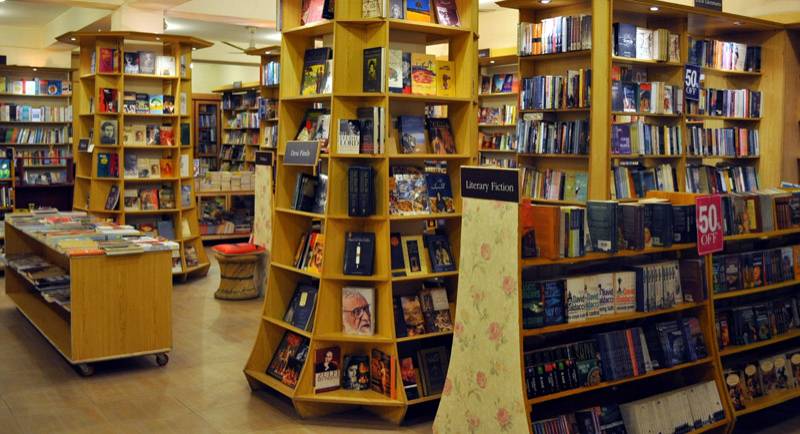

The Narrow Corridor: States, Societies, and the Fate of Liberty
Daron Acemoglu, James A. Robinson
Penguin Books Limited (2019)
By the authors of the international bestseller Why Nations Fail, based on decades of research, this powerful new big-picture framework explains how some countries develop towards and provide liberty while others fall to despotism, anarchy or asphyxiating norms- and explains how liberty can thrive despite new threats.
Liberty is hardly the ‘natural’ order of things; usually states have been either too weak to protect individuals or too strong for people to protect themselves from despotism. There is also a happy Western myth that where liberty exists, it’s a steady state, arrived at by ‘enlightenment’. But liberty emerges only when a delicate and incessant balance is struck between state and society – between elites and citizens. This struggle becomes self-reinforcing, inducing both state and society to develop a richer array of capacities, thus affecting the peacefulness of societies, the success of economies and how people experience their daily lives.
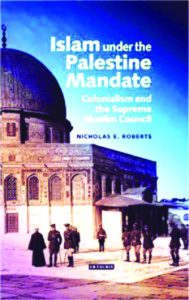
Islam under the Palestine Mandate: Colonialism and the Supreme Muslim Council
Nicholas E. Roberts
I.B.Tauris (2016)
Concerns about the place of Islam in Palestinian politics are familiar to those studying the history of the modern Middle East. A vital part of this history is the rise of Islamic opposition to the British in Mandate Palestine during the 1920s and 1930s. Colonial officials had wrestled with the question of how to rule over a Muslim-majority country and considered traditional Islamic institutions essential for maintaining order. Islam under the Palestine Mandate tells the story of the search for a viable Islamic institution in Palestine and the subsequent invention of the Supreme Muslim Council.
Nicholas E. Roberts is Associate Professor of History and co-chair of the International and Global Studies program at Sewanee: The University of the South. His research articles have appeared in the Journal of Palestine Studies, the Arab Studies Journal and History Compass, and he has received several awards, including a Fulbright fellowship and a Lady Davis fellowship to conduct research in Israel and Palestine.
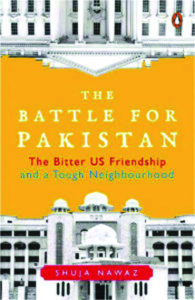
The Battle for Pakistan: The Bitter US Friendship and a Tough Neighbourhood
Shuja Nawaz
Penguin Random House (2019)
The Battle for Pakistan showcases a marriage of convenience between unequal partners. The relationship between Pakistan and the United States since the early 1950s has been nothing less than a whiplash-inducing rollercoaster ride. Today, surrounded by hostile neighbours, with Afghanistan increasingly under Indian influence, Pakistan does not wish to break ties with the US. Nor does it want to become a vassal of China and get caught in the vice of a US-China rivalry, or the Arab-Iran conflict.
Internally, massive economic and demographic challenges as well as the existential threat of armed militancy pose huge obstacles to Pakistan’s development and growth. Could its short-run political miscalculations in the Obama years prove too costly? Can the Trump administration help salvage this relationship?
Based on extensive travel in the region, frequent policy interactions and many on-the-record interviews with key leaders, The Battle for Pakistan untangles the complex US relationship in the past decade. Shuja Nawaz identifies the path forward, provided US and Pakistani leaders make the right choices for the longer term.
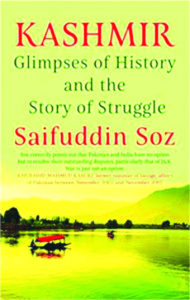
Kashmir: Glimpses of History and the Story of Struggle [Hardcover] Saifuddin Soz Hardcover
Saifuddin Soz
Rupa Publications (2018)
One of the most prominent voices of Kashmir, Saifuddin Soz takes a passionate and compelling look at the past, present and future of a vastly misunderstood people.
Throughout its long, diverse, distinctive but scarred history, the beautiful and bountiful land of Kashmir has captured the imagination of travellers, kings, historians and nations. From its origins as an ancient civilization, to embracing Islam, to fighting invaders, to ruthless militancy, and the ensuing action by the Indian army; Kashmir has seen it all.
Kashmiris fought the Mughals, the Afghans and the Sikhs in the past. However, it was their fight against Dogra autocracy that ultimately led to their disillusionment with the Indian establishment. With Pakistan feeding the emotions of deeply alienated and disenchanted people and the Indian government using force and taking a harder stand by the day, this unique culture now stands completely besieged.
What is the future of Kashmir, then? What is the destiny of its people? Can there be solution to the weary problem confronting Kashmir? Can Kashmir reconcile with the past for a better future? Can the Valley return to a life of dignity, peace and development? How?
Saifuddin Soz discusses these questions and provides credible and implementable solutions to end the grave crisis.
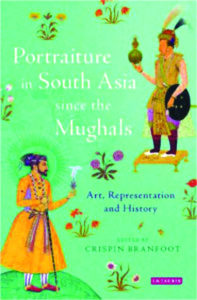
Portraiture in South Asia since the Mughals: Art, Representation and History
Crispin Branfoot
Bloomsbury Publishing (2018)
One of the most remarkable artistic achievements of the Mughal Empire was the emergence in the early seventeenth century of portraits of identifiable individuals, unprecedented in both South Asia and the Islamic world. Appearing at a time of increasing contact between Europe and Asia, portraits from the reigns of the great Mughal emperor-patrons Akbar, Jahangir and Shah Jahan are among the best-known paintings produced in South Asia. In the following centuries portraiture became more widespread in the visual culture of South Asia, especially in the rich and varied traditions of painting, but also in sculpture and later prints and photography.
This collection seeks to understand the intended purpose of a range of portrait traditions in South Asia and how their style, setting and representation may have advanced a range of aesthetic, social and political functions. The chapters range across a wide historical period, exploring ideals of portraiture in Sanskrit and Persian literature, the emergence and political symbolism of Mughal portraiture, through to the paintings of the Rajput courts, sculpture in Tamil temples and the transformation of portraiture in colonial north India and post-independence Pakistan.
This specially commissioned collection of studies from a strong list of established scholars and rising stars makes a significant contribution to South Asian history, art and visual culture.
Crispin Branfoot is Senior Lecturer in South Asian Art and Archaeology at SOAS and is a renowned expert in Mughal portraiture and Indian history, having worked in this capacity at both the Ashmolean and the British Museum.

